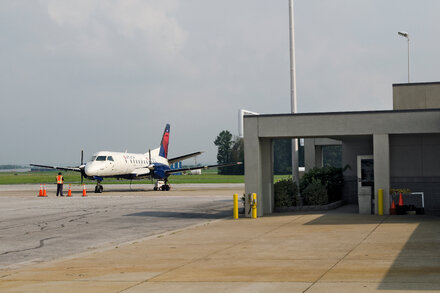Major U.S. airports recently experienced significant flight delays and operational disruptions during a government shutdown. These issues stemmed directly from widespread staff shortages within federal agencies critical to air travel safety and security.

Major airports across the United States experienced significant flight delays and operational disruptions during a recent government shutdown, primarily attributed to widespread staff shortages within federal agencies responsible for air travel safety and security. The prolonged impasse led to a critical reduction in available personnel, impacting both air traffic control and security screening operations.
The 35-day partial government shutdown, which began in December and extended into January, left hundreds of thousands of federal employees working without pay or furloughed. Among the most critically affected were essential workers at the Federal Aviation Administration (FAA) and the Transportation Security Administration (TSA).
Air traffic controllers, crucial for managing the nation’s complex airspace, were among those deemed essential and required to work without immediate compensation. Reports indicated an increase in unscheduled absences, including sick leave, among controllers struggling with financial hardship and burnout. This reduction in available staff meant that FAA facilities were operating with fewer controllers, leading to increased workload for those present and, consequently, a reduced capacity for handling air traffic.
“Our members are dedicated professionals, but they are working under immense stress and without pay,” stated a spokesperson for the National Air Traffic Controllers Association (NATCA) during the shutdown. “This situation is unsustainable and poses a clear risk to the national airspace system.”
Similarly, TSA screeners, also designated as essential personnel, faced similar challenges. Staffing shortfalls at security checkpoints resulted in longer wait times for passengers at many airports, prompting concerns about both efficiency and security standards.
Operational Impact and Ground Stops
The cumulative effect of these shortages became acutely visible with a surge in flight delays and, in some cases, ground stops at major aviation hubs. Airports such as LaGuardia and Newark Liberty International were particularly impacted, experiencing significant operational slowdowns. The FAA publicly acknowledged the staffing challenges:
“We are experiencing staffing difficulties in some air traffic control facilities,” an FAA statement confirmed during the height of the disruptions. “We have adjusted operations to ensure safety, which may result in some delays.”
The decision to implement ground stops, a measure typically reserved for severe weather or major incidents, underscored the gravity of the staffing crisis. These stops, which temporarily halt all departing flights from an airport or region, were a direct consequence of the FAA’s inability to adequately staff air traffic control positions to manage normal traffic volume safely.
Aviation industry stakeholders and political leaders widely expressed alarm over the situation, calling for an immediate resolution to the shutdown to prevent further degradation of the air travel system. The strain on the system highlighted the critical, often understated, role of federal employees in maintaining essential public services.
Following the end of the government shutdown, air travel operations gradually returned to normal as federal employees resumed their duties and back pay was processed. However, the episode brought renewed attention to the vulnerabilities of critical infrastructure when federal agencies face prolonged funding disruptions and staff morale issues.
Source: Read the original article here.





